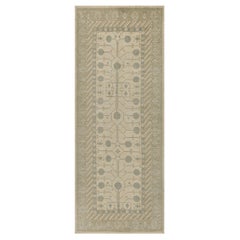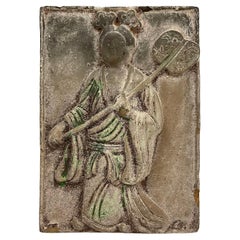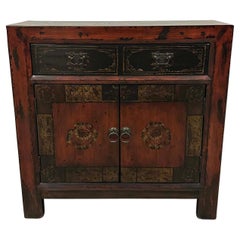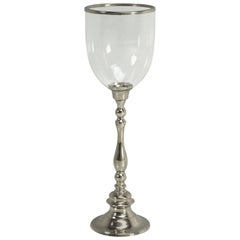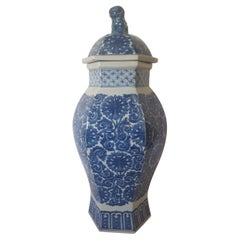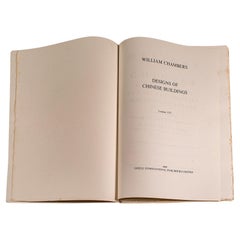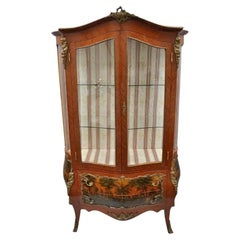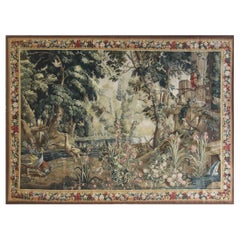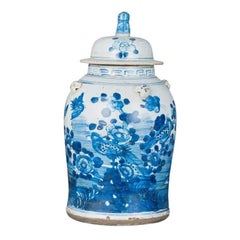Chinese Reproduction Furniture
2010s Chinese Khotan Chinese and East Asian Rugs
Wool
20th Century Chinese Chinese Export Decorative Art
Clay
Mid-20th Century Chinese Chinese Export Furniture
Wood
Early 2000s Chinese More Lighting
Early 2000s Chinese Chinese Export Pottery
Ceramic
Late 20th Century British Mid-Century Modern Books
Paper
Late 20th Century Unknown Louis XV Cabinets
Glass, Wood
Late 20th Century Chinese French Provincial Tapestries
Wool
21st Century and Contemporary Chinese Chinese Chippendale Jars
Porcelain
21st Century and Contemporary Chinese Chinese Chippendale Jars
Porcelain
20th Century Japanese Chinese Export Prints
Paper, Wood
21st Century and Contemporary Chinese Baroque Western European Rugs
Wool
Early 2000s Chinese Revival Central Asian Rugs
Wool
Early 2000s Chinese Chinese Export Pottery
Paint, Pottery
2010s Thai Modern Decorative Bowls
Bronze
2010s Thai Modern Decorative Bowls
Bronze
2010s Thai Modern Decorative Bowls
Bronze
2010s Thai Modern Decorative Bowls
Bronze
2010s Thai Modern Decorative Bowls
Bronze
2010s Thai Modern Decorative Bowls
Bronze
2010s Thai Modern Decorative Bowls
Bronze
2010s Thai Modern Decorative Bowls
Bronze
2010s Thai Modern Decorative Bowls
Bronze
2010s Thai Modern Decorative Bowls
Bronze
2010s Thai Modern Decorative Bowls
Bronze
2010s Thai Modern Decorative Bowls
Bronze
2010s Thai Modern Decorative Bowls
Bronze
2010s Thai Modern Decorative Bowls
Bronze
2010s Thai Modern Decorative Bowls
Bronze
2010s Thai Modern Decorative Bowls
Bronze
2010s Thai Modern Decorative Bowls
Bronze
2010s Thai Modern Decorative Bowls
Bronze
20th Century Chinese Chinese Export Statues
Stone
Late 20th Century Chinese Paintings and Screens
20th Century Chinese Qing Decorative Bowls
Porcelain
Early 2000s Chinese Benches
Wood
21st Century and Contemporary Chinese Chinoiserie Chandeliers and Pendants
Crystal, Metal
2010s Chinese Fireplaces and Mantels
Wood
Early 2000s Chinese Country Candlesticks
Wood
Early 2000s Chinese Country Candlesticks
Mid-20th Century Chinese Export Planters, Cachepots and Jardinières
Porcelain
1990s Chinese Chinese Export Vases
Ceramic
1990s Chinese Chinese Export Jars
Ceramic
1990s Chinese Victorian Planters, Cachepots and Jardinières
Ironstone
Chinese Reproduction Furniture For Sale on 1stDibs
How Much is a Chinese Reproduction Furniture?
- What is reproduction furniture?1 Answer1stDibs ExpertApril 5, 2024Reproduction furniture is modern furniture designed to resemble pieces made in the past. Reproduction furniture borrows the general characteristics of a particular historical style, such as Victorian or Edwardian furniture, and makers of period reproduction furniture seek to imitate the designs associated with that style. The intention is to generally remain as true to the design as possible. On 1stDibs, shop a diverse assortment of antique, vintage and contemporary furniture.
- 1stDibs ExpertMay 22, 2019
Reproduction furniture is crafted to imitate a specific past style, such as Chippendale or Regency.
- 1stDibs ExpertOctober 24, 2024To tell if furniture is reproduction, search hidden areas, such as the undersides of tabletops and seats and the backs and drawer interiors of casegoods. Manufacturers of reproduction furniture attempt to capture the look of genuine antique and vintage pieces but aren't trying to deceive customers. As a result, they almost always mark their pieces with a maker's mark, making it easy to research the company that produced them. Once you locate this marking on your piece, use trusted online resources to learn more about the maker and find out if they're known for reproduction furniture. If you have any difficulty locating the mark or information about the manufacturer online, consider consulting a certified appraiser or knowledgeable antique dealer. Shop a wide range of furniture on 1stDibs.
- 1stDibs ExpertSeptember 16, 2024Whether reproduction furniture is worth anything depends on a variety of factors, including its age, maker, materials and overall condition. Generally, reproduction pieces will be worth less than the original antique and vintage pieces that inspire them. To find out how much your piece may be worth, enlist the help of a certified appraiser or knowledgeable dealer. Find a wide variety of antique, vintage and contemporary furniture on 1stDibs.
- 1stDibs ExpertOctober 24, 2024To tell antique furniture from reproduction, first check for a maker's mark. By researching the maker associated with the marking using trusted online resources, you can determine when they were active. If the company was in business 100 years ago or more, your piece may be an antique, but if the company's history began more recently, your piece is likely a reproduction. If you can't locate a marking, study the details of the furniture up close. Genuine antiques will often show tool marks and slight variations in carved details because they were typically handcrafted. Most contemporary furniture is machine-made, so you won't usually see these types of characteristics. When in doubt, have a certified appraiser or knowledgeable antique dealer evaluate your furniture. On 1stDibs, find a wide variety of antique furniture.
- 1stDibs ExpertAugust 26, 2024To tell the difference between antique and reproduction furniture, first look at hidden areas, such as the backs or insides of the drawers. On reproduction furniture, you may find plywood or engineered wood in these areas, while antique furniture will usually have solid hardwood on drawer interiors and backs. Also, slight irregularities and marks indicating that the furniture was built with hand tools rather than machines usually suggest that the piece is antique. Because it can be difficult to differentiate reproductions from genuine antiques without expertise and training, you may wish to consult a certified appraiser or knowledgeable antique dealer about the age of your piece. Find a diverse assortment of antique furniture on 1stDibs.
- 1stDibs ExpertJune 15, 2023To care for Chinese lacquered furniture, wipe it with a damp cloth regularly. You can use a paste wax intended for use on lacquer finishes to restore shine, but avoid using harsh furniture polishes and cleaners on pieces. On 1stDibs, shop a range of lacquered furniture.
- 1stDibs ExpertApril 5, 2022Chinese-style furniture is usually called Chinoiserie. The term indicates furniture and decorative objects produced in Europe and North America that borrow design elements from pieces made in China and other East Asian countries. On 1stDibs, find a collection of Chinoiserie.
- 1stDibs ExpertNovember 4, 2024To identify antique Chinese furniture, look carefully at its details. Chinese craftsmen often built furniture using mortise and tenon joinery, eliminating the need for nails and screws. If you see this type of hardware, your piece is likely not at least 100 years old, especially if the hardware still looks new and shiny. Since antique furniture was handmade, you will normally see slight imperfections, such as tool marks or slight variations in carvings. Pieces that appear completely uniform and pristine are less often genuine antiques.
When present, maker's marks can also be helpful. Research the marks to learn more about when the maker was active and producing pieces like yours. Alternatively, you can have a certified appraiser or experienced antique dealer evaluate your furniture for you.
Shop an assortment of antique Chinese furniture.  PAGODA REDOctober 7, 2020
PAGODA REDOctober 7, 2020To determine the age of a Chinese furniture piece, look carefully at the joinery and finish. Natural expansion and contraction of the wood over time will cause a joint to protrude or retract, distorting a once-seamless fit. Antique lacquer finishes become crackled and worn over time. Areas of exposed wood, such as the underside of a table, the footrest of a chair, or the back of a cabinet should appear raw and dry compared to the finished surface. With use, the legs of tables and chairs become weathered near the bottom from precipitation and use.
